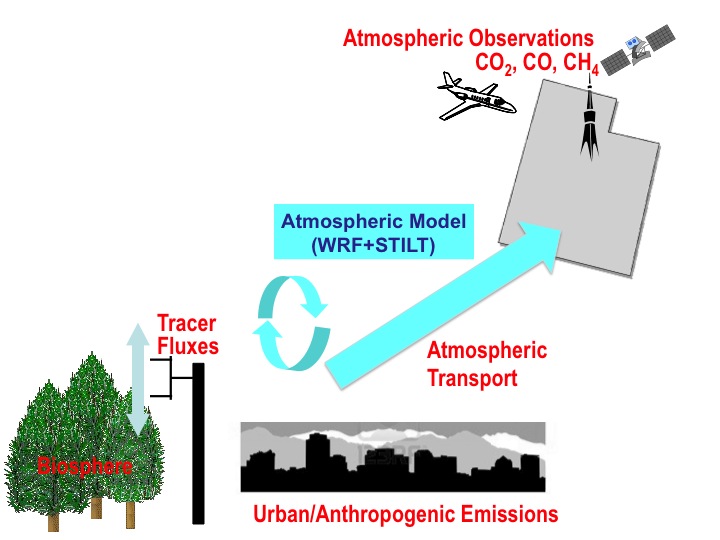CO2 is understood to be one of the key greenhouse gases (GHG) that alter the energy balance of the Earth’s surface and thus the climate in which we live in. Human activities are increasing the amount of CO2 in the atmosphere and leading to anthropogenic climate change, with potentially significant consequences, due to the central role in which human societies around the world have adapted to their respective climates.
As suggested by the figure below from the IPCC's 2007 report, the level of CO2 in the atmosphere is controlled by a variety of processes involving both natural systems and human activities.
The anthropogenic combustion of fossil fuels is the pre-dominant driver of annual increases in CO2. However, the biosphere can also increase or decrease CO2 levels. For instance, terrestrial vegetation removes CO2 from the atmosphere through photosynthesis while also releasing CO2 by respiration.
I am interested in better understanding the processes emitting and removing CO2 from the atmosphere. Specifically, these processes include: (1) Emissions of CO2 and other GHGs within urban areas, where more than half of the global population resides and where significant emissions of CO2 and other GHGs are found. (2) Sources/sinks of CO2 in forests, particularly in the American Rockies, where there are indications that persistent drought and insect disturbance are leading to forest dieback and increased fire activity.
My research approach is to make use of CO2 enhancements and depletions that show up in the atmosphere as signatures of regional-scale sources and sinks. Toward this end, I analyze atmospheric CO2 observations with a “Lagrangian” model of the atmosphere to account for the atmosphere in transporting CO2. Measurements on the ground that provide further information, whether eddy covariance or ecological data, are also incorporated within the analysis.

My work, in collaboration with Christoph Gerbig and Steve Wofsy during my time at Harvard University, has been among the first attempts to integrate continental atmospheric CO2 concentrations with land surface observations to estimate regional scale carbon sources/sinks [Gerbig et al., 2003a; Gerbig et al., 2003b; Lin et al., 2004].
Over the years I have participated in multi-institutional, international efforts at studying the Carbon Cycle. For instance, I was a contributing author to the North American Carbon Program and have served on the science committee of the Canadian Carbon Program.




